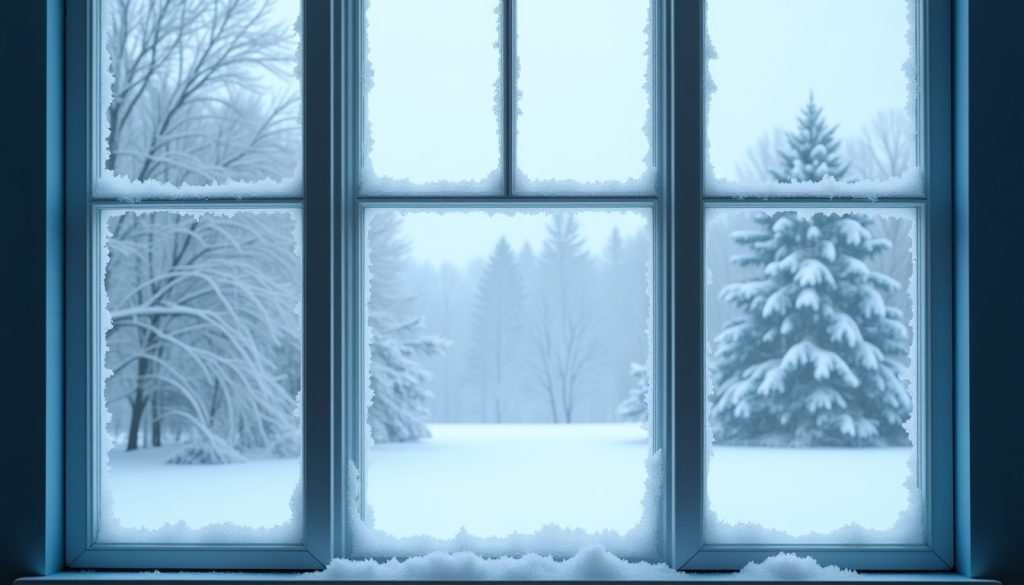Before selecting the ideal windows for your home, it’s crucial to have a thorough understanding of your climate. The geographic location of your home significantly influences the type of windows that will enhance both energy efficiency and comfort. This knowledge is paramount for any home improvement project aiming to strike a balance between aesthetic appeal and functional performance.
Climate conditions, such as temperature extremes, humidity levels, and seasonal variations, play a pivotal role in determining the best window types and materials for your residence. Analyzing these factors will provide insight into how your windows can help optimize energy efficiency and mitigate unnecessary heat loss or gain.
To begin, consider the primary climate categories:
- Cold Climate: Areas that experience harsh, cold winters need windows that provide high insulation values. Look for double or triple-pane glass that is filled with inert gases like argon or krypton for added thermal resistance.
- Hot Climate: Regions with intense heat demand windows that can block heat and keep interiors cool. Options with low-E (low-emissivity) coatings reflect sunlight, reducing solar heat gain.
- Temperate Climate: Locations with mild weather conditions require a balanced approach, combining modest insulation with sun filtration. Double-pane windows with versatile coatings may be optimal.
- Humid Climate: Humid areas need windows that prevent condensation and mold growth, calling for moisture-resistant frames and effective seals.
Here’s a quick reference guide to help you understand the specific needs tied to your climate:
| Climate Type | Window Feature | Purpose |
| Cold | Triple-pane, gas-filled | Enhance insulation, reduce heat loss |
| Hot | Low-E coatings | Block solar heat, enhance energy efficiency |
| Temperate | Double-pane, selective coatings | Balance insulation with light control |
| Humid | Moisture-resistant frames | Prevent condensation, maintain window integrity |
Understanding your climate not only aids in choosing the right window types and features but also significantly impacts the overall efficacy of your home improvement endeavors. With this insight, you are equipped to make informed decisions that contribute to your home’s energy efficiency, comfort, and longevity.
Selecting energy-efficient windows
Once you have a clear understanding of your climate, the next step is to focus on selecting energy-efficient windows that best fit your needs. Energy-efficient windows are crucial for improving your home’s comfort while also contributing to energy savings and reducing your overall carbon footprint. Here’s a step-by-step guide to help you in the selection process:
- Research Energy Ratings: Begin by familiarizing yourself with various energy performance labels. In the US, the National Fenestration Rating Council (NFRC) provides standardized ratings such as U-factor, Solar Heat Gain Coefficient (SHGC), and Visible Transmittance (VT). Understanding these metrics will help you compare products:
- U-factor: Indicates the window’s insulating capacity. Lower values mean better insulation, which is essential for both cold and hot climates.
- SHGC: Measures how much solar radiation passes through the window. Lower SHGC values are preferred in hot climates to reduce cooling loads.
- VT: Describes the amount of natural light that passes through the window. Higher VT values maximize daylighting, reducing the need for artificial lighting.
- Consider Window Glazing: Choose between single, double, or triple glazing based on your climate needs:
- Single-glazed: Suitable for mild climates where insulation is less critical.
- Double-glazed: Common for temperate zones providing a balance of insulation and cost-effectiveness.
- Triple-glazed: Ideal for extremely cold climates, offering superior insulation and an extra barrier against heat loss.
- Opt for Low-E Coatings: Low-emissivity (Low-E) coatings are metallic layers that help manage heat transfer. Depending on your climate:
- In warm climates, choose coatings that block heat from entering the house, while allowing natural light.
- In cooler climates, select coatings that let in heat, aiding in passive solar heating.
- Select Inert Gas Fills: Look for windows filled with inert gases like argon or krypton between the panes. These gases are denser than air and offer better thermal performance, minimizing heat transference.
- Investigate Frame Materials: Although exploring frame materials will be detailed in the next section, it’s beneficial to consider:
- Vinyl and fiberglass: Known for high thermal resistance and low maintenance.
- Wood: Offers excellent insulation but requires more upkeep.
- Focus on Installation: Even the best windows may fail to perform as intended if not properly installed. Ensure professional installation or meticulously follow manufacturer guidelines to prevent air leaks and maximize energy efficiency.
Incorporating energy-efficient windows in your home improvement project not only enhances comfort but also contributes significantly to reducing energy consumption, thereby supporting a greener environment. By carefully considering these factors, you can make informed decisions that align with both your climate and sustainability goals.
Comparing window materials
When selecting windows for your home improvement project, understanding and comparing the various materials available can significantly impact both the performance and longevity of your windows. Each material offers unique attributes that influence durability, maintenance, energy efficiency, and aesthetics.
Vinyl windows are a popular choice due to their affordability and low maintenance requirements. They are highly resistant to moisture, making them an excellent option for humid climates where condensation and mold can be concerns. Vinyl’s insulating properties contribute to enhanced energy efficiency by minimizing heat transfer, which can lead to lower heating and cooling costs throughout the year. Additionally, vinyl windows do not require painting or sealing, reducing overall upkeep and providing long-lasting durability.
Wood windows, while generally more expensive, offer aesthetic appeal and excellent insulation properties. They provide a traditional, warm appearance that enhances the visual appeal of various architectural styles. However, wood requires regular maintenance to prevent rot, warping, and pest infestations, particularly in wetter climates. Treating and sealing wood windows ensure they remain energy-efficient and extend their lifespan, but this also means committing to routine upkeep.
Aluminum windows are known for their strength and slim profiles, making them a preferred choice for modern architectural designs. They are durable and resistant to the elements but lack the natural insulation of materials like wood or vinyl. Aluminum tends to conduct heat, making them less ideal for extreme climates unless they are equipped with thermal breaks. Thermal breaks help improve energy efficiency by reducing heat transfer, ensuring that aluminum remains a viable option for a variety of environments.
Fiberglass windows offer a balance of strength, durability, and energy efficiency. They resist warping and expanding, thus maintaining structural integrity over time. Fiberglass can be painted, allowing customization to match your home’s decor. This material provides superior insulation compared to aluminum, making it suitable for both hot and cold climates. Fiberglass windows are also known for their longevity, which, when combined with their energy-efficient properties, can contribute significantly to reduced energy consumption in your home.
Lastly, composite windows combine materials like wood particles and polymer plastics to create windows that offer the best of both worlds— the appearance of wood with the low-maintenance benefits of synthetic materials. They stand up well to moisture and can provide excellent insulation. Composite windows are designed to mimic the aesthetic qualities of wood while ensuring that upkeep is minimized.
Each material has its pros and cons, but the choice ultimately depends on your specific climate, aesthetic preferences, and budget. By understanding the unique properties of each material, you can select windows that not only enhance your home’s energy efficiency but also maintain their aesthetic appeal and durability under your specific weather conditions. This selection will play a crucial role in your overall home improvement strategy, ensuring that you achieve a comfortable and sustainable living environment.
Considering window styles for ventilation
When evaluating window styles for optimal ventilation, it’s vital to consider not only the architectural features of your home but also how each style contributes to comfortable airflow and energy efficiency. The effective selection of window styles can improve the indoor environment by facilitating natural ventilation, which can significantly enhance the temperature regulation within your living space, reducing reliance on mechanical systems and thereby lowering energy costs.
For instance, casement windows are a great choice for promoting adequate ventilation. Hinged at the sides, they open outward, allowing for maximum air passage. Their design allows you to direct breezes into your home effectively, making them particularly beneficial in areas where cross-ventilation is crucial. They seal tightly when closed, which aids in preventing drafts and maintaining energy efficiency.
Similarly, awning windows add to the versatility of your ventilation strategy. These windows are hinged at the top and open outward, forming a slanted canopy that can shed light rain while permitting airflow. This feature is especially advantageous in humid climates, enabling ventilation even during wet conditions without letting water seep inside, helping maintain a pleasant interior environment year-round.
Double-hung and single-hung windows also offer functional ventilation benefits. By allowing one or both sashes to move, you have flexible control over the amount of air entering your space. This choice supports effective vertical airflow, which is incredibly beneficial for rooms on upper floors where hot air rises and needs to escape. These styles are popular not only for their classic appearance but also for ease of use and maintenance.
Sliding windows, with their streamlined design, provide a broad unobstructed view and a modern look. They are perfect for rooms where horizontal space is available, sliding along rails to open. While they might not offer the same ventilation as casement or awning styles, they make up for it with the ease of operation and ability to open large sections of the window pane, allowing for efficient ventilation when needed.
Selecting the right window styles can greatly enhance both the aesthetic appeal and functional aspects of any home improvement project. By strategically choosing styles that complement your home’s architectural characteristics and your local climate conditions, you can ensure adequate ventilation, improve energy efficiency, and bolster the long-term comfort of your dwelling. Remember, combining functionality with style can lead to a well-ventilated home environment that supports both health and energy savings, directly contributing to a successful and sustainable home improvement endeavor.
Balancing natural light with insulation
Natural light is a coveted element in home design, as it enhances the ambiance and can effectively reduce the reliance on artificial lighting, thereby contributing to energy efficiency and saving on electricity costs. However, striking the right balance between inviting natural light and ensuring proper insulation is crucial to maintaining a comfortable and energy-efficient environment in your home.
To optimize both light and insulation, consider the strategic use of window treatments and glazing technologies. Utilizing double or triple-pane windows with low-E (low-emissivity) coatings can be highly beneficial. These coatings minimize the amount of ultraviolet and infrared light that can pass through glass, without compromising on the natural light influx, which is particularly useful in maintaining insulation throughout varying seasonal conditions.
Another way to maximize energy efficiency while enjoying natural light is by selecting glass types tailored to your specific climate needs. For instance, in colder climates where insulation is necessary, choosing windows with higher R-values can help retain heat indoors. Conversely, in warmer regions, selecting windows with lower Solar Heat Gain Coefficients (SHGC) can reduce the amount of heat coming in. These features ensure that while your home is bright and welcoming, it also remains comfortably insulated against external temperatures.
Window orientation also plays a vital role in managing both light and insulation. South-facing windows are ideal for capturing sunlight and passive solar heating, while north-facing windows play a complementary role by reducing heat gain. East and west-facing windows can be equipped with shading devices or smart electronic tinting technology to control heat infiltration based on the time of day and specific lighting needs.
Incorporating smart window treatments like cellular shades, which trap air and provide added insulation, or motorized blinds that adjust based on the sun’s movement, can enhance energy efficiency further. These additions offer an opportunity to block or allow light as needed, without manual intervention, thus aligning with your home’s heating or cooling demands in real time.
By successfully balancing natural light and insulation, you can enjoy a brighter, more energy-efficient living space. This balance is not only essential for reducing energy costs but also enhances the overall comfort and appeal of your home, making it a pivotal aspect of any smart home improvement project. As you optimize these elements, you create an environmentally sustainable and pleasing living environment, adaptable to any climate’s demands.
In conclusion, choosing the right windows tailored to your climate and home’s characteristics involves a thoughtful balance of several factors. By understanding your climate and combining energy-efficient options with appropriate materials and styles, you can significantly enhance your home’s comfort and reduce energy costs. Prioritizing natural light without compromising on insulation ensures you enjoy the benefits of a well-lit space while maintaining energy efficiency. Remember, the right window choices not only uplift your living space aesthetically and functionally but also contribute to a sustainable lifestyle in the long term.





